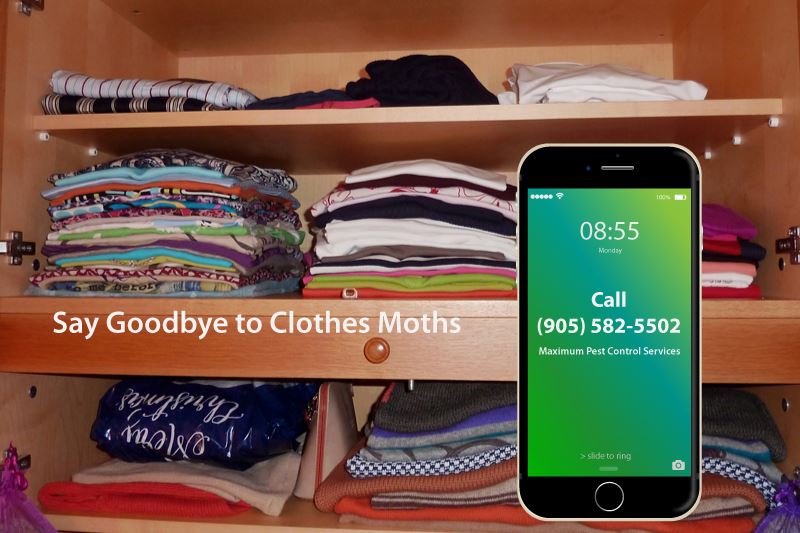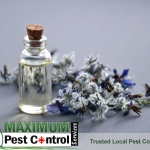
How to Protect Your Wardrobe from Clothes Moths
Wardrobes are any modern person’s prized possession because they perform so many functions whether this is how you look, how you come across, and also how you feel. However, there are many fabric-loving pests such as clothing moths, silverfish, bed bugs, and even termites in some cases that can devastate any item of clothing from a bag to a coat to a silk dress.
For that reason it is absolutely essential to protect your wardrobe from pest invasions since in the case of closed storage spaces; pests can go unnoticed when in your closet and gestate for long periods of time.
Clothes moths that feed primarily on various organic and animal fibers such as furs, wool, and cotton, these winged insects are the most common and dangerous foes when it comes to fabric-loving pests. Clothes moths are known for devouring virtually any kind of fabric although wool and carpets are their particular favorites. Clothes moths lay eggs that hatch into larvae that feed on most fabrics, as a result, wardrobes are the perfect breeding ground for these pests.
If you are noticing the odd flying moth around your room or near your wardrobe, this could be a strong signal of an infestation being well underway as full-grown moths do not really feed on cloth, and adult moths can reproduce very quickly and deposit their eggs in warm and dark places (such as back of your wardrobe).
Clothes Moths that can cause damage to your clothes come in two main varieties which are the Webbing Moths (Tineola bisselliella) and the Case-Making Moths (Tinea pellionella).
Casemaking moth constructs a ‘case’ of sorts from fibers and leftover clothing particles and live in it, while webbing moth makes webs from clothing materials. Hence their name. Fully grown adults in both species are about only 1cm long and have yellowish or gray color. Learn more here
Both species are particularly harmful and problematic for households because moth larvae prefer fibers that are natural (as opposed to inexpensive synthetic blends) devouring real silk, leather, good quality cotton, cashmere, chiffon, fur, and wool so they can cause a lot of financial loss if left unchecked and prevention measures aren’t taken at early signs of moth infestation.
Most effective treatment strategy is to deal with the problem as quickly as possible. This is true for all types of pests including moths.
Preventative Tips Against Clothes Moths
Here are some ways you can prevent an infestation from taking root in your wardrobe (or any storage space) where you keep clothes, blankets, carpets or any material made of fabric.
First rule to remember for pest control for moths is that killing all the flying moths won’t solve the problem, because the real damage is caused by their babies. You have to eliminate the entire lifecycle.
- Wardrobe hygiene is the key. Although we usually visit the wardrobe only when we need our clothes, regularly cleaning out your closet and dusting it well should be on your to-do list. For larger coats or carpets putting them out in the sun at least once a year is also a great way to keep them aired and naturally disinfected.
- Always inspect more valuable clothing items for larvae, eggs, or full-grown moths. Eggs and larvae can hide in crevices in your wardrobe or cupboards or be nested in the pockets of clothes.
- Although you’ll need to discard infested items, you may use a flashlight and magnifying glass to triple check if unsure.
- Control moisture in your wardrobe. Many clothes moths are drawn to dark and damp crevices and places. Regular airing, or using a dehumidifier can be an option, importantly, make sure that damp or not fully dried coats or sweaters are not placed in such places.
- Both species (Webbing Moths and Case-Making Moths) hate light and movement, therefore, keeping your closets open and also rearranging items in your storage space will help prevent moths from wanting to nest in your closet.
- For valuables items like fur coats or silk shirts, consider keeping them protected using plastic storage bins, or use a vacuum seal bag so that no moth can enter and humidity or moisture can also not be absorbed from the environment. Heat can also be a contributing factor for most house pests, accordingly, maintaining a cool temperature in and around your wardrobe is advisable.
Looking for a Moth Exterminator Near You?
Having over a decade of pest control experience, Maximum Pest Control Services is ready to answer your pest related questions and handle all pest control problems in Ontario neighborhoods including Mississauga, Oakville, Burlington, Milton, Scarborough, Hamilton GTA Canada. We can safely and effectively exterminate moths as well.



